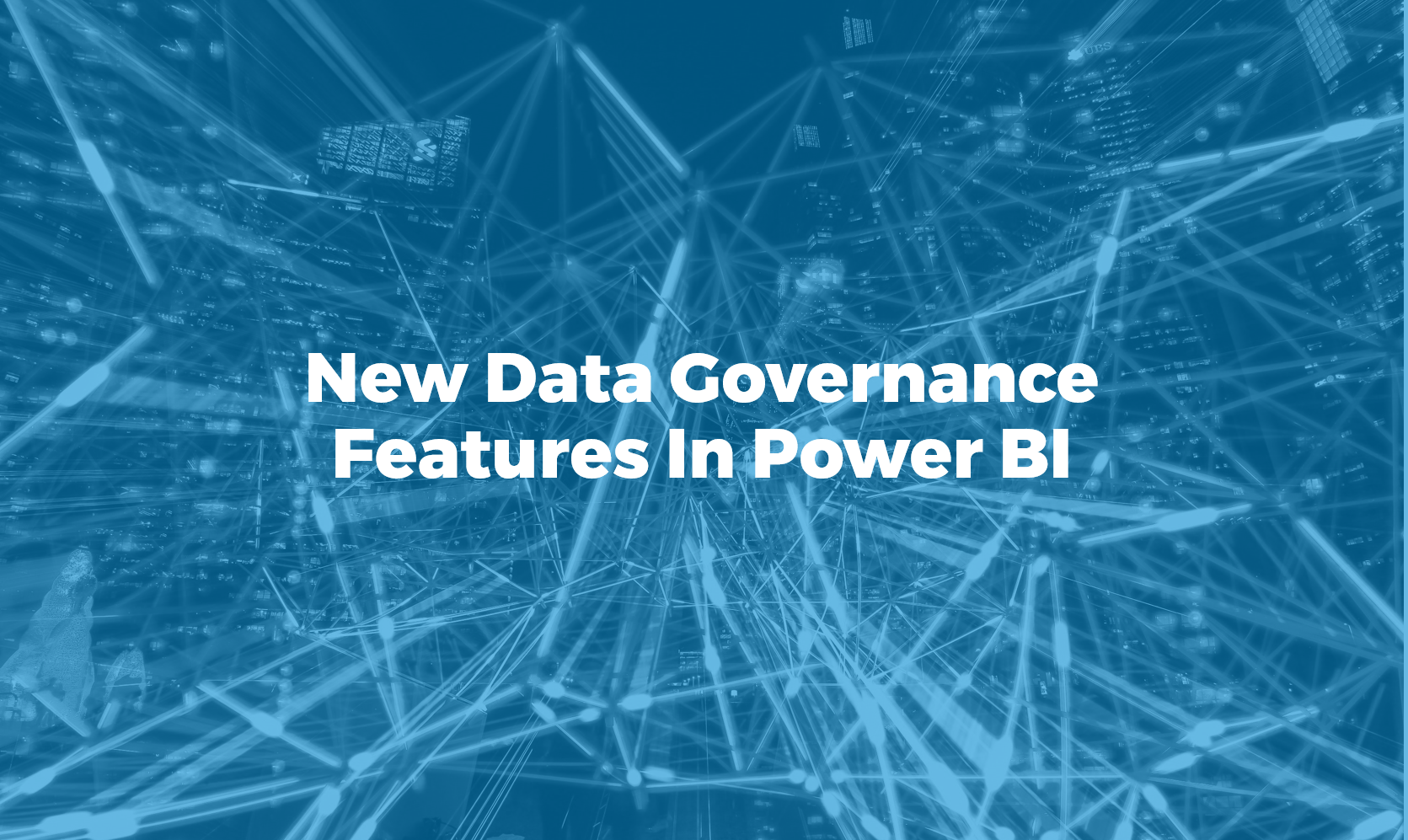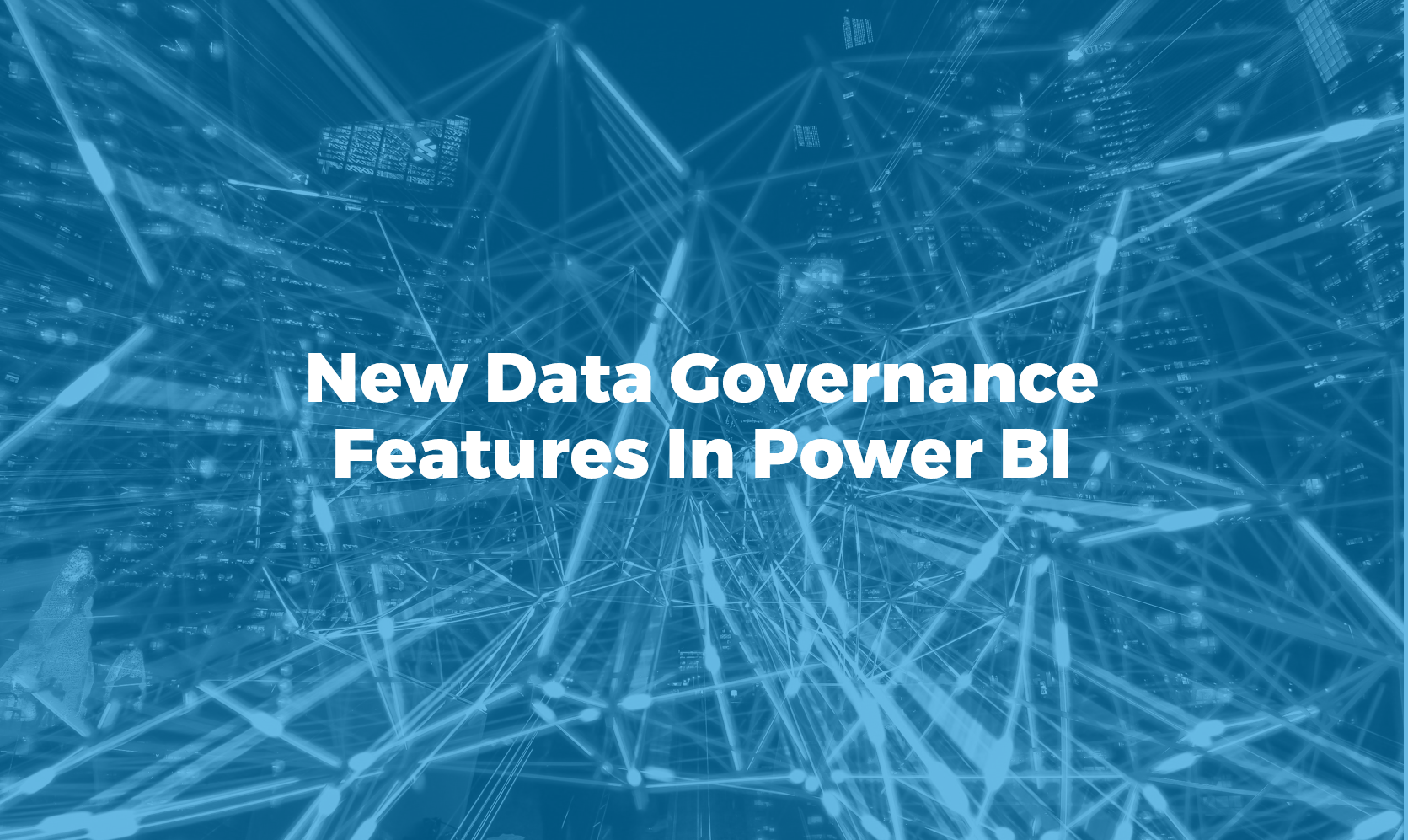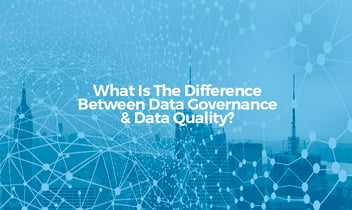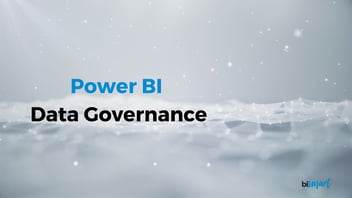Power BI has new features that support data governance. Read this article to know all about them and the benefits for your company.
Data governance is fundamental today for companies dealing with data, but many see it as a very cumbersome task. However, good data governance goes hand in hand with good analysis, as it can have related purposes. To achieve this symbiosis, it is only a matter of changing the work approach, so that the data governance policies employed support the analysis tasks by including them in the BI workflow. Microsoft Power BI has recently added data governance features that help achieve this symbiosis.

Why is data governance important?
Data governance could be defined as "the exercise of authority, control and shared decision-making over the management of data assets". Data management, in turn, consists of the implementation of data policies. In this blog we have an article dedicated to data governance and data management that explains its operation in more detail and the relationship it has with data quality.
Its relevance is due to the fact that it allows guaranteeing the integrity of data assets through processes and procedures, standardization of systems and creation of consistent data distribution policies.
With data governance we can ensure the security and privacy of our data assets. It is important that private or confidential data has access rules.
Data is of no use to us if knowledge of it is limited or if the meaning of its content is opaque or obscure. It is therefore important to curate the data and document it. In general, data must be organized and accessible.
If the source of the data, as well as the steps taken to clean and improve it, and its subsequent use are well known, confidence in the effectiveness of the data increases. When trusted experts can explicitly certify the data, confidence increases even further. This fosters a culture of data and helps it to develop, which is critical to digital transformation.
Is your Power BI environment growing out of control?
Download the complete guide to understand how to implement an effective governance framework in Power BI from day one.
How does it work?
Data governance has many facets, but the most important are the curation or preservation of data, their origin and protection.
Data curation allows data to be sorted and classified in order to easily detect those that are interesting within all those available to the organization and can thus be considered reliable and accurate.
The origin of the data helps us track where the data comes from and, in certain cases, what its life cycle has been, that is, what steps it has gone through.
Data protection ensures that the various parties who come into contact with the data see only those that are relevant to them and for which they are authorised, which requires a definition of rules at the source. These centralized rules ensure that all derived analyses, displays, reports, visuals and dashboards comply with protection restrictions.
What are the difficulties?
In some corporations, the obligation to comply with current legislation regarding data and the fact of having confidential customer information has meant that, in some cases, data governance has become a task considered a diversion in business intelligence analysis, since it requires leaving the BI platform. However, it is typical of the tasks in a BI platform to perform this type of diversion, although the fact that data governance cannot be performed in the same place can make it difficult to extend the jurisdiction of restrictions or rules.
Specifically, knowledge sharing is sometimes done with documents, spreadsheets and slides that are often sent as email attachments. How can a data governance effort work if this dissemination of insights is allowed?
How does Power BI facilitate data governance?
If we were able to curate our data while obtaining and analyzing it, or if we could guarantee its protection even when we disseminate it through other channels, we would gain enormously in efficiency and quality of work in the business intelligence flow.
Microsoft Power BI has recently incorporated some features that allow to increase the capacity of data governance in the BI flows. These features are simple to use and not very invasive.
Is your Power BI environment growing out of control?
Download the complete guide to understand how to implement an effective governance framework in Power BI from day one.
With these new features there is a way of being able to maintain this security without having to leave the analysis platform. Microsoft Power BI provides a better user experience, while giving you peace of mind that your company is compliant. The Microsoft platform ensures good data curation, origin and protection, and reduces distractions through simple, non-intrusive governance features. In addition, new platform options eliminate the need to leave Power BI with data governance features that are embedded in the data acquisition and preparation experiences, management interfaces, and end-user delivery experiences.
The way Power BI works is different from the ways that the industry has traditionally used. The traditional way means that consumers have to use more than one platform to include data governance in their BI flows.
Some of these new data governance features are:
- Endorsed datasets: This new functionality allows to have datasets backed up or endorsed by their owners, who are registered in the cloud service and navigate in a restricted space. These can indicate which datasets are important for the rest of the team. In addition, users authorized by the administrator can mark certain datasets as certificates, which gives them more authority.
- Lineage and impact analysis: Another new feature set includes the workspace and the age of the workspace dataset. They are virtually easier to use than the dataset approval features. When navigating workspace objects, users simply switch from the standard List View to the new Lineage View to view data sources and gateways, data flows, data sets, reports, and dashboards on a network diagram.
- Data protection: Using existing protection resources on Microsoft platforms, Power BI enables you to add confidentiality and ownership tags to datasets, reports, dashboards, and dataflows. These tags are defined by security administrators in the Microsoft Security and Compliance Center and apply to all Microsoft 365 applications. Thus, all data exported to Power Point, Excel or PDF will carry confidentiality tags, so only authenticated users will be able to access them.
Power BI brings more new data governance features at all stages, including data acquisition and preparation, which are a great support to ensure compliance with privacy regulations. Still, Power BI allows you to continue working in the traditional way, with external platforms.
These new features are useful, simple, and high quality, but the most important advantage of Power BI is that it allows you to adapt its features to the exact needs of each company by focusing on the essential functionalities.
Governance for Power BI: The essential platform for controlling and optimizing your Power BI environment
Bismart has developed Governance for Power BI, a comprehensive governance solution for Power BI that automates the documentation of datasets and dataflows, enriches them with functional and business information, and allows centralized monitoring of all activity in the Power BI environment, both at the user and report levels.
The tool automates the documentation of dataflows and datasets, adds functional and business context in a centralized manner, and provides a unified view of all activity in the environment—from user usage to report behavior.
Is your Power BI environment growing out of control?
Download the complete guide to understand how to implement an effective governance framework in Power BI from day one.




